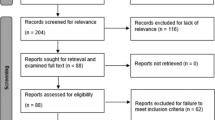Abstract
Purpose
The aims of this study had been to classify the superior angle of the scapula based on morphological features, and to investigate its correlation with the suprascapular notch.
Methods
303 samples of Chinese dried scapular specimens were collected from the Department of anatomy, Southwest Medical University. According to the anatomical morphological characteristics of the superior angle of the scapula, the morphological classification was performed to explore its correlation with the suprascapular notch (SSN).
Results
The superior angle of the scapula was classified into three types (Hilly shape, Mountain Peak shape and Chimney shape). There were 143 cases of Hilly shape (47.20%), 144 cases of Mountain shape (47.52%), and 16 cases of Chimney shape (5.28%). The angle of Hilly shape (93.36° ± 7.76°) was significantly larger than the Mountain Peak shape (86.60° ± 6.61°) and the Chimney shape (86.22° ± 7.20°), and the difference was statistically significant (P < 0.05). The type I–III of Rengachary’s classification to SSN was low risk of suprascapular nerve entrapment, while the type IV–VI was high risk of suprascapular nerve entrapment. Compared with the Mountain Peak shape and the Chimney shape, the Hilly shape corresponds to more types I–III of suprascapular notch but to fewer types IV–VI (P < 0.05).
Conclusions
The superior angle of the scapula was divided into three types: Hilly shape (47.20%), Mountain Peak shape (47.52%) and Chimney shape (5.28%). The Mountain Peak shape might be more likely to result in inability of the levator muscle with acute or chronic overload mechanisms, and the risk of suprascapular nerve entrapment in Mountain peak shape was higher than that of Hilly shape. And, it might have a potential effect on neck pain.



Similar content being viewed by others
References
Agrawal D, Singh B, Dixit SG, Ghatak S, Bharadwaj N, Gupta R et al (2015) Morphometry and variations of the human suprascapular notch. Morphologie 99(327):132–140
Bruce J, Dorizas J (2013) Suprascapular nerve entrapment due to a stenotic foramen: a variant of the suprascapular notch. Sports Health 5(4):363–366
Beger O, Dinç U, Beger B, Uzmansel D, Kurtoğlu Z (2018) Morphometric properties of the levator scapulae, rhomboid major, and rhomboid minor in human fetuses. Surg Radiol Anat 40(4):449–455
Chotai PN, Loukas M, Tubbs RS (2015) Unusual origin of the levator scapulae muscle from mastoid process. Surg Radiol Anat 37(10):1277–1281
Cirpan S, Gocmen-Mas N, Aksu F, Edizer M, Karabekir S, Magden AO (2016) Suprascapular foramen: a rare variation caused by ossified suprascapular ligaments. Folia Morphol (Warsz) 75(1):21–26
Estwanik JJ (1989) Levator Scapulae Syndrome. Phys Sportsmed 17(10):57–68
Jezierski H, Podgórski M, Stefańczyk L, Kachlik D, Polguj M (2017) The influence of suprascapular notch shape on the visualization of structures in the suprascapular notch region: studies based on a new four-stage ultrasonographic protocol. Biomed Res Int. https://doi.org/10.1155/2017/5323628
Jezierski H, Wysiadecki G, Sibiński M, Borowski A, Podgórski M, Topol M et al (2016) A quantitative study of the arrangement of the suprascapular nerve and vessels in the suprascapular notch region: new findings based on parametric analysis. Folia Morphol (Warsz) 75(4):454–459
Ludig T, Walter F, Chapuis D, Molé D, Roland J, Blum A (2001) MR imaging evaluation of suprascapular nerve entrapment. Eur Radiol 11(11):2161–2169
Łabętowicz P, Synder M, Wojciechowski M, Orczyk K, Jezierski H, Topol M et al (2017) Protective and predisposing morphological factors in suprascapular nerve entrapment syndrome: a fundamental review based on recent observations. Biomed Res Int. https://doi.org/10.1155/2017/4659761
Menachem A, Kaplan O, Dekel S (1993) Levator scapulae syndrome: an anatomic-clinical study. Bull Hosp Jt Dis 53(1):21–24
Natsis K, Totlis T, Tsikaras P, Appell HJ, Skandalakis P, Koebke J (2007) Proposal for classification of the suprascapular notch: a study on 423 dried scapulas. Clin Anat 20(2):135–139
Oladipo GS, Aigbogun EO, Akani GL (2015) Angle at the medial border: the spinovertebra angle and its significance. Anat Res Int. https://doi.org/10.1155/2015/986029
Polguj M, Synder M, Kwapisz A, Stefańczyk K, Grzelak P, Podgórski M et al (2015) Clinical evaluation of the shape of the suprascapular notch-an ultrasonographic and computed tomography comparative study: application to shoulder pain syndromes. Clin Anat 28(6):774–779
Polguj M, Jędrzejewski K, Podgórski M, Topol M (2011) Morphometric study of the suprascapular notch: proposal of classification. Surg Radiol Anat 33(9):781–787
Polguj M, Jędrzejewski K, Podgórski M, Majos A, Topol M (2013) A proposal for classification of the superior transverse scapular ligament: variable morphology and its potential influence on suprascapular nerve entrapment. J Shoulder Elbow Surg 22(9):1265–1273
Podgórski M, Topol M, Sibiński M, Domżalski M, Grzelak P, Polguj M (2015) What is the function of the anterior coracoscapular ligament?—a morphological study on the newest potential risk factor for suprascapular nerve entrapment. Ann Anat 201:38–42
Piasecki DP, Romeo AA, Bach BR (2009) Suprascapular neuropathy. J Am Acad Orthop Surg 17(11):665–676
Polguj M, Sibiński M, Grzegorzewski A, Grzelak P, Majos A, Topol M (2013) Variation in morphology of suprascapular notch as a factor of suprascapular nerve entrapment. Int Orthop 37(11):2185–2192
Rengachary SS, Burr D, Lucas S, Hassanein KM, Mohn MP, Matzke H (1979) Suprascapular entrapment neuropathy: a clinical, anatomical, and comparative study. Part 2: anatomical study. Neurosurgery 5(4):447–451
Rengachary SS, Neff JP, Singer PA, Brackett CE (1979) Suprascapular entrapment neuropathy: a clinical, anatomical, and comparative study. Part 1: clinical study. Neurosurgery 5(4):441–446
Tepeli B, Karataş M, Coşkun M, Yemişçi O (2017) A comparison of magnetic resonance imaging and electroneuromyography for denervated muscle diagnosis. J Clin Neurophysiol 34(3):248–253
Tubbs RS, Nechtman C, D’Antoni AV, Shoja MM, Mortazavi MM, Loukas M et al (2013) Ossification of the suprascapular ligament: a risk factor for suprascapular nerve compression? Int J Shoulder Surg 7(1):19–22
Voisin JL, Ropars M, Thomazeau H (2016) Anatomical evidence for a uniquely positioned suprascapular foramen. Surg Radiol Anat 38(4):489–492
Wang HJ, Chen C, Wu LP, Pan CQ, Zhang WJ, Li YK et al (2011) Variable morphology of the suprascapular notch: an investigation and quantitative measurements in Chinese population. Clin Anat 24(1):47–55
Funding
This study was supported by the Academician Workstation in Luzhou (20180101).
Author information
Authors and Affiliations
Contributions
LZ and SJ-F: Conception and design, XG-G: Manuscript writing/editing, YL and MO: Protocol/project development, XY-L: Data analysis, JQ and YX-X: Data collection. GY-W: Provision of materials and literature search.
Corresponding authors
Ethics declarations
Conflict of interest
No conflict of interest exists in the submission of this manuscript, and the manuscript was approved by all authors for publication.
Ethical approval
Ethical approval was given by the medical ethics committee of Southwest Medical University with the following reference number: SWMCTCM2017-0701.
Rights and permissions
About this article
Cite this article
Zhang, L., Guo, X., Liu, Y. et al. Classification of the superior angle of the scapula and its correlation with the suprascapular notch: a study on 303 scapulas. Surg Radiol Anat 41, 377–383 (2019). https://doi.org/10.1007/s00276-018-2156-4
Received:
Accepted:
Published:
Issue Date:
DOI: https://doi.org/10.1007/s00276-018-2156-4




